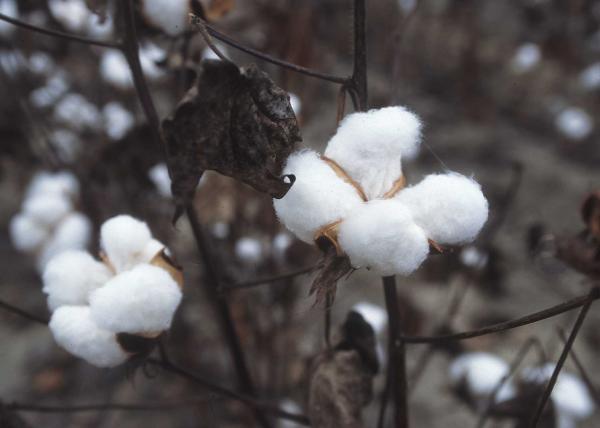This summer Arkansas, Missouri, and Tennessee have all restricted the use of the herbicide dicamba. Other states, like Iowa and Georgia, are monitoring the situation closely. This on the heels of a massive lawsuit filed by lawyers representing farmers in ten states against makers of the chemical.
How did this herbicide, which was recently billed as part of the solution to a major agricultural issue, become regarded as such a significant problem? (1)
The latest problem surrounds Monsanto’s most expensive genetically engineered crop: dicamba-tolerant cotton and soybeans. Dicamba kills broadleaf plants indiscriminately, so traditionally it was only used before crops emerged because the herbicide will kill them too. In a fashion similar to glyphosate-tolerant crops, dicamba-tolerant cotton and soy allowed farmers to apply the herbicide to their fields without harming crops.
A known problem with dicamba has always been that it is very volatile and can drift onto neighboring crops and thus destroy them. So along with developing the GM crops, Monsanto developed a less volatile version of dicamba to placate concerns they had about drift.
The system was supposed to be a major boon for farmers, especially those struggling against herbicide-resistant weeds, which can happen if only one product is used. Mixing up the herbicides applied to a field in different growing seasons can go a long way to minimizing the spread and prevelance of herbicide resistant weeds.
Sounds simple, right? So, why so much controversy? Well, this is where the situation starts to get complicated.
Monsanto released the dicamba-resistant crops in 2015, based on existing dicamba. That was before the EPA gave the green light for the new, less volatile version of dicamba, which got the government seal of approval in November of 2016. That didn't stop farmers from planting dicamba-tolerant crops in early 2016. One million acres of dicamba-tolerant soybeans were planted in the US. But since the newer, safer version of dicamba was not yet approved, farmers in the US sprayed these crops with existing more volatile versions of dicamba, killing weeds on their land while sparing their crops—but putting their neighbor’s crops at risk that did not plant the same GM seeds. According to regulatory officials, roughly 200,000 acres of crops in Arkansas, Missouri, and Tennessee experienced crop damage from dicamba drift in 2016.
Publicly Monsanto said they told farmers not to do this and the company maintains that farmers are at fault for deciding to use products off label. Yet according to a lawsuit filed on July 19, lawyers for the farmers insist Monsanto sales reps told them secretly not to worry about applying older, more drift-prone versions of dicamba.
“This was Monsanto’s real plan: publicly appear as if it were complying, while allowing its seed representatives to tell farmers the opposite in person,” their lawyers allege in the suit “Their sales pitch: assure purchasers that off-label and illegal uses of dicamba would ‘be just fine.’"
That was 2016—but 2017 has had its own problems.
This growing season, farmers were able to use the reformulated dicamba that was specially formulated not to drift as much—except according to farmers it does. In Arkansas, about 600 farmers reported drift-related-problems. 200,000 acres is in Missouri. Tennessee has seen about 70 similar complaints. A few in Iowa. None in George or Canada.
Monsanto’s chief scientist, Dr. Robb Fraley, asserts that not every case of what is being alleged as caused by dicamba-drift is really caused by the chemical:
While leaf cupping can be caused by dicamba, it can also be caused by many other things, including environmental factors, diseases and other crop protection products. For that reason, diagnosing the problem can be complex, especially when there have been relatively few inquiries in closely neighboring states. In fact, Arkansas, the only major cotton and soybean growing state where Monsanto does not sell XtendiMax®, has received nearly twice as many inquiries as every other state combined.
Which brings us to the blame game: Who is responsible, farmers or Monsanto for the dicamba drift dilemma?
Setting aside the 'he said/she said' element in the lawsuit, it’s pretty clear that the farmers who used older formulations of dicamba caused results everyone could predicted. As I said before, the fact that dicamba can drift onto neighboring lands is universally known in the agriculture community.
On the other hand, it’s hard to fault farmers desperate to protect their business by any means necessary. Margins are tight and so yield remains important. That means keeping weeds down. By one estimate, half of US farmers say their farm has developed some resistance to the uber-popular weed killer glyphosate. An EPA-approved product that could solve this issue came on the market so it’s tough to blame farmers for planting it. It’s even tougher to blame them when the product they were promised was safer but turned out to be problematic for their neighbors. It's easier to blame a large corporation, especially one as large as Monsanto, which is nearly equivalent to Whole Foods in size. But Monsanto maintained that liberal spraying of dicamba when it was known to drift was against the protocol.
The legal question really boils down to this: What did Monsanto expect would happen when the company released the crop a whole year before the “safer” version of dicamba gained approval? Lawyers will argue something like that Honda wouldn't sell you an electric car if they weren't yet selling the car's environmentally-friendly engine. They will try to convince a jury it’s hard to believe this situation played out differently than Monsanto should have expected.
NOTE:
(1) Although maybe it shouldn't be much of a surprise as the herbicide has a history of controversy which includes a 2016 dispute among Arkansas farmers that ended in a fatal shooting.



